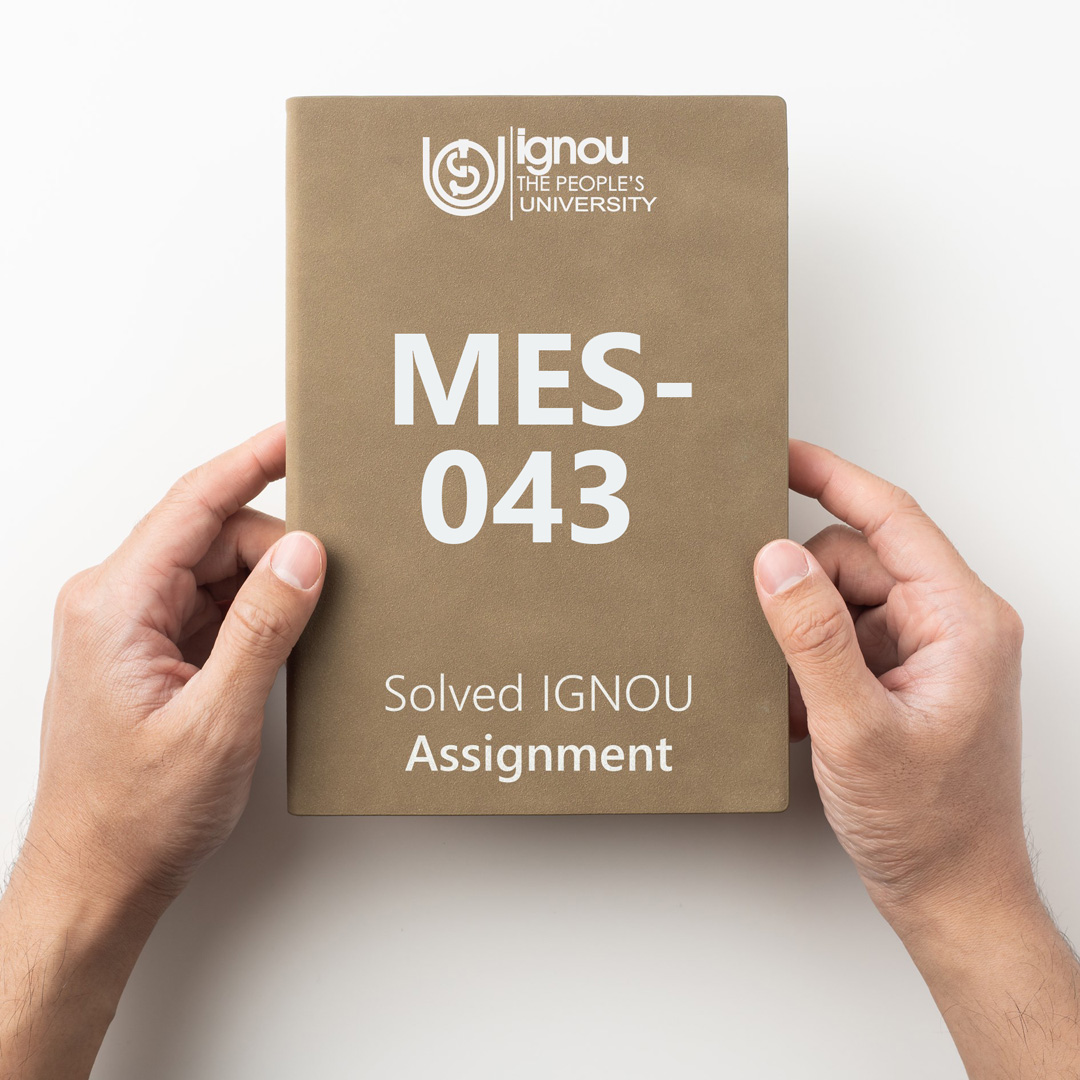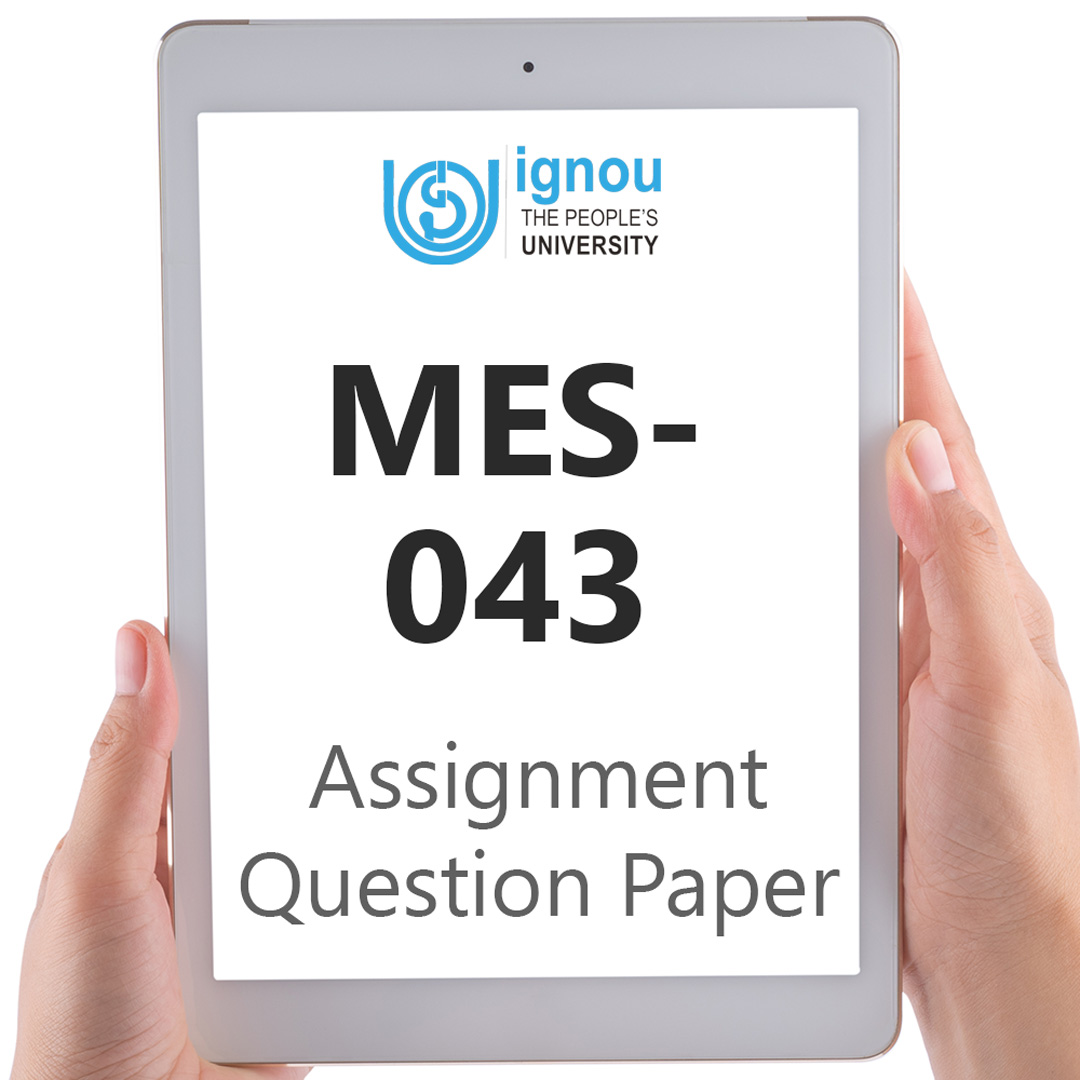If you are looking for MES-043 IGNOU Solved Assignment solution for the subject Organizational Behaviour, you have come to the right place. MES-043 solution on this page applies to 2023 session students studying in MAEDU, PGDEMA courses of IGNOU.
MES-043 Solved Assignment Solution by Gyaniversity
Assignment Code: MES-043/TMA/2023
Course Code: MES-043
Assignment Name: Organizational Behaviour
Year: 2023
Verification Status: Verified by Professor
a) Discuss the change drivers that influence educational management. (500 words)
Ans) Educational management is a dynamic and complex process that involves the coordination and management of resources to achieve educational objectives. In recent years, the educational sector has been subject to various change drivers that have significantly impacted the management and delivery of education.
Change Drivers that Influence Educational Management
Globalisation: Globalisation has been a significant change driver in educational management. The increasing interconnectedness of economies, cultures, and societies has led to the emergence of a global market for education. Educational institutions are now competing with each other globally, and they are required to be responsive and adaptive to global trends and needs. The globalisation of education has led to the development of international partnerships and collaborations, which have created opportunities for cross-border learning and sharing of best practices.
Globalisation has also led to the emergence of a diverse student body, which has created the need for educational institutions to adapt their teaching and learning methods to meet the needs of these students. This has led to the development of new curricula and pedagogical approaches that are responsive to the needs of a diverse student population.
Globalisation of Higher Education: The globalisation of higher education is a significant change driver in educational management. With the growth of the global knowledge economy, higher education institutions are under pressure to provide quality education that is relevant and responsive to the needs of the global market. The globalisation of higher education has led to the emergence of a diverse student body and the need for educational institutions to adapt their teaching and learning methods to meet the needs of these students.
The globalisation of higher education has also created new opportunities for international partnerships and collaborations, which have led to the sharing of knowledge, research, and best practices. This has enabled educational institutions to leverage their resources and expertise to provide quality education to students globally.
Globalisation of Higher Education in India: In India, the globalisation of higher education has led to the emergence of new challenges and opportunities for educational management. India is emerging as a major player in the global knowledge economy, and educational institutions are under pressure to provide quality education that is competitive in the global market. The government of India has launched several initiatives to promote the globalisation of higher education, including the establishment of new institutions and the expansion of existing ones
The globalisation of higher education in India has also created opportunities for international collaborations and partnerships, which have led to the sharing of knowledge, research, and best practices. This has enabled educational institutions in India to leverage their resources and expertise to provide quality education to students globally.
Informational and Communication Technologies and the Knowledge Society: Informational and communication technologies (ICTs) are significant change drivers in educational management. The emergence of the knowledge society has led to the increasing use of ICTs in education, which has transformed teaching and learning methods. Educational institutions are now using online platforms, learning management systems, and virtual classrooms to deliver education to students.
ICTs have also created new opportunities for collaboration, research, and knowledge-sharing among educators and learners. Educational institutions are now able to leverage ICTs to provide personalised and adaptive learning experiences to students. The use of ICTs in education has also led to the development of new pedagogical approaches that are responsive to the needs of a diverse student population.
b) Elaborate the types of communication in an educational system. (500 words)
Ans) Communication is an essential aspect of any educational system. Effective communication among different stakeholders, including teachers, students, parents, administrators, and policymakers, is critical for the success of an educational system. There are several types of communication in an educational system.
Types of Communication in an Educational System
Auto Communication: Self-talk, often known as auto communication, is another term for internal communication. This form of communication takes place within the context of an educational environment and involves either a student or a teacher interacting with themselves. It's possible to think of it as a form of reflection, in which the learner or instructor processes new information or assesses their own performance. For example, a student might talk to herself while studying to help reinforce material, or a teacher might talk to themselves while organising classes. Both of these scenarios are examples of auto talk.
Interpersonal Communication: Communication between two people is a process that goes in both directions, and it's called interpersonal communication. In the context of an educational institution, this mode of communication comprises either the professors talking to the students or the students talking to the teachers. Conversations, lectures, and roundtable discussions are all examples of verbal and nonverbal modes of communication that can be utilised. Communication between individuals is essential to the development of a productive learning environment, the establishment of meaningful connections, and the promotion of education.
Group Communication: The term "group communication" refers to the exchange of information between three or more people. Group communication in a learning environment may take the shape of group conversations, group projects, or activities geared toward the development of teams. The ability to collaborate effectively, analyse critically, and find solutions to problems all require strong communication among groups.
Mass Communication: The act of communicating information to a huge number of people is what we mean by "mass communication." An announcement, a newsletter, or a post on social media are all examples of forms of mass communication that may be used in an educational context. It is essential for the educational system to maintain this mode of communication in order to keep students, parents, and members of the community informed about upcoming events, policies, and initiatives.
Metacommunication: Communication about communication is what's meant by the term "metacommunication." This sort of communication may involve discussing different communication tactics or methods in an educational setting. For example, providing comments on how to improve communication or identifying communication difficulties are both examples of this type of communication. Enhancing one's communication abilities and fostering more effective communication both require metacommunication to a significant degree.
Communication within a System: When referring to the educational system, "communication within the system" refers to communication between the various parts or levels of the system. Communication between instructors and administrators or communication between schools and the district office are two examples of what this may look like in an educational system. It is absolutely necessary to have efficient communication inside a system in order to guarantee that all of the participants are working toward the same goals and aims.
c) Suppose you are the head of an educational institution. Illustrate how you would take decisions at various levels of institutional management cycle and whom you would involve as stakeholders. (500 words)
Ans) As the head of an educational institution, decision-making is a critical aspect of institutional management. Decision-making at various levels of institutional management cycle involves identifying problems, setting goals, and developing plans of action to achieve these goals. It is crucial to involve stakeholders at every stage of decision-making to ensure that the decisions made are effective and address the needs of all stakeholders. In this response, I will illustrate how I would take decisions at various levels of institutional management cycle and whom I would involve as stakeholders.
Identify the Problem: The first step in decision-making is to identify the problem. As the head of an educational institution, I would involve teachers, students, parents, and administrators in identifying the problems. By involving stakeholders in this process, I can gain a comprehensive understanding of the problem and its impact on different stakeholders. For example, if the problem is declining student performance, I would involve teachers to identify the factors contributing to this decline, students to understand their perspective on the issue, parents to get their feedback on what they think could be contributing to the decline, and administrators to discuss any policies or initiatives that may be affecting student performance.
Analyse the Problem: After identifying the problem, the next step is to analyse it. This involves gathering data, examining the causes and effects of the problem, and exploring possible solutions. In this stage, I would involve experts in data analysis and research, as well as the same stakeholders involved in identifying the problem. For example, if the problem is declining student performance, I would involve data analysts to examine student performance data, research experts to explore the causes and effects of the decline, and teachers, students, parents, and administrators to discuss possible solutions.
Develop and Evaluate Alternative Solutions: Once the problem has been analysed, the next step is to develop and evaluate alternative solutions. In this stage, I would involve experts in different areas, such as education policy, curriculum development, and assessment. I would also involve stakeholders, including teachers, students, parents, and administrators, to ensure that the proposed solutions address their needs and concerns. For example, if the problem is declining student performance, I would involve curriculum developers to explore possible changes to the curriculum, assessment experts to explore new ways of assessing student performance, and teachers, students, parents, and administrators to evaluate the proposed solutions.
Choose and Implement the Solution: After evaluating alternative solutions, the next step is to choose and implement the solution. In this stage, I would involve teachers, students, parents, and administrators to ensure that the chosen solution is implemented effectively and that all stakeholders are aware of the changes. For example, if the chosen solution is to introduce a new assessment system, I would involve teachers in training on how to use the new system, students in understanding the new system and its implications, parents in understanding how the new system will affect their child's performance, and administrators in monitoring the implementation of the new system.
Monitor and Evaluate the Solution: The final stage in decision-making is to monitor and evaluate the solution. In this stage, I would involve experts in evaluation and research, as well as the same stakeholders involved in identifying the problem. For example, if the chosen solution is to introduce a new assessment system, I would involve evaluation experts to assess the effectiveness of the new system, research experts to explore the impact of the new system on student performance, and teachers, students, parents, and administrators to provide feedback on the new system.
In conclusion, stakeholders are involved in recognising the problem, analysing it, proposing and assessing possible solutions, selecting and implementing the solution, and monitoring and evaluating it at various levels of the institutional management cycle. If I involve stakeholders in decision-making, I can guarantee effective and stakeholder-responsive decisions.






